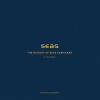The Dravidian Languages
The Dravidian languages are spoken by over 200 million people in South Asia and in Diaspora communities around the world, and constitute the world’s fifth largest language family. It consists of about 26 languages in total including Tamil, Malayalam, Kannada and Telugu, as well as over 20 non-literary languages. In this book, Bhadriraju Krishnamurti, one of the most eminent Dravidianists of our time, provides a comprehensive study of the phonological and grammatical structure of the whole Dravidian family from different aspects. He describes its history and writing systems, discusses its structure and typology, and considers its lexicon. Distant and more recent contacts between Dravidian and other language groups are also discussed. With its comprehensive coverage this book will be welcomed by all students of Dravidian languages and will be of interest to linguists in various branches of the discipline as well as Indologists.
• The Dravidian language family covers several widely spoken South Asian languages (including Tamil); in all there are some 200 million speakers of these languages • The author, one of the most eminent scholars in this field, has held visiting appointments in the US, Australia and Japan, and is a member of the Indian National Academy of Letters • The book will be of interest to linguists in various branches of the discipline, and also to Indologists
ContentsAcknowledgements; 1. Introduction; 2. Phonology: descriptive; 3. The writing systems of the literary languages; 4. Phonology: historical and comparative; 5. Word formation: roots, stems, formatives, derivational suffixes and nominal compounds; 6. Nominals: nouns, pronouns, numerals and time and place adverbs; 7. The verb; 8. Adjectives, adverbs and clitics; 9. Syntax; 10. Lexicon; 11. Conclusion; Bibliography; Indexes.
Review‘… handled with great lucidity … DL is of interest to a wide range of scholars and students of language … Because of the thorough and meticulous nature of the analysis, it is an important contribution to the theory of comparative reconstruction … a timely work of great importance. The merits of the book can perhaps best be summarized by stating that, after almost a century and a half, Caldwell\'s great work has at last been superseded.’ School of Oriental & African Studies
- Forlag: Cambridge University Press
- Utgivelsesår: 2006
- Kategori: Språk
- Lagerstatus: Ikke på lagerVarsle meg når denne kommer på lager
- Antall sider: 573
- ISBN: 9780521025126
- Innbinding: Heftet












